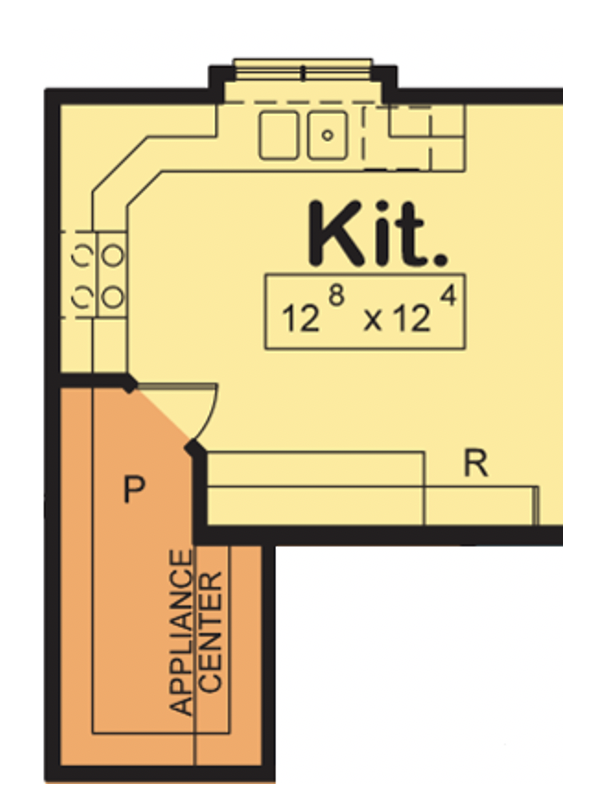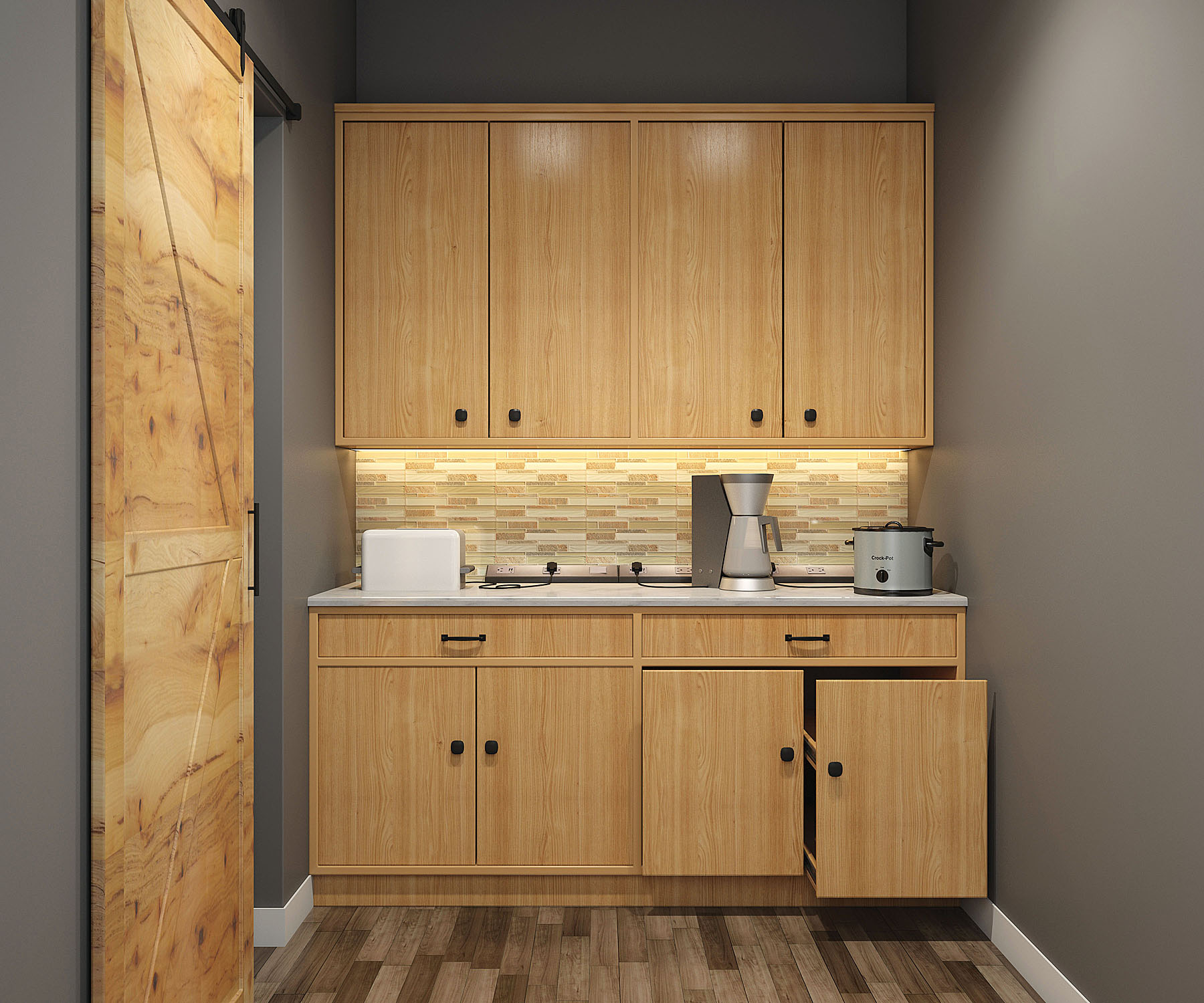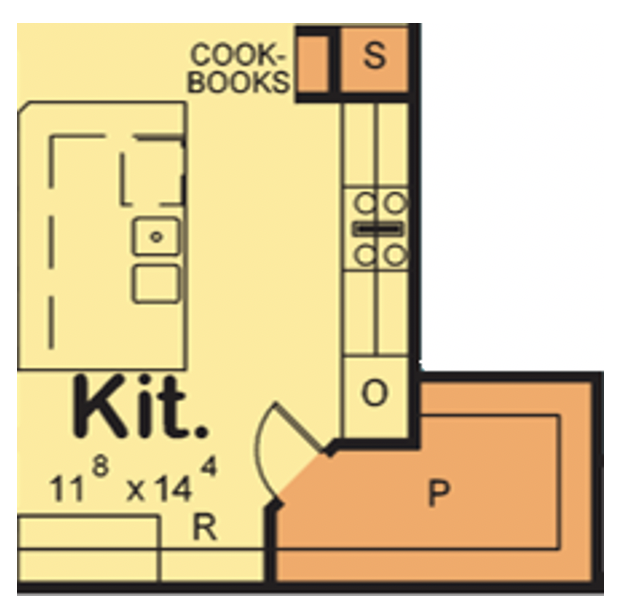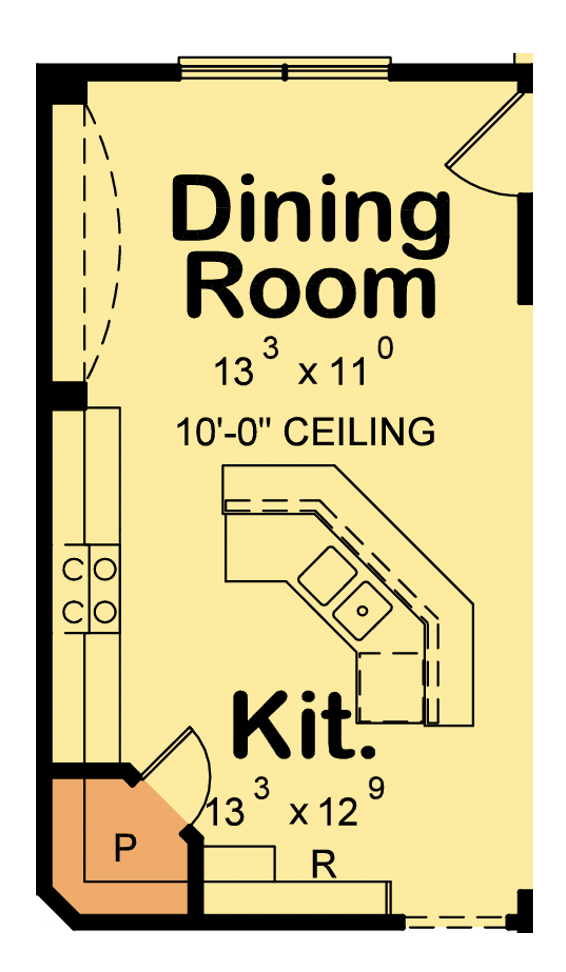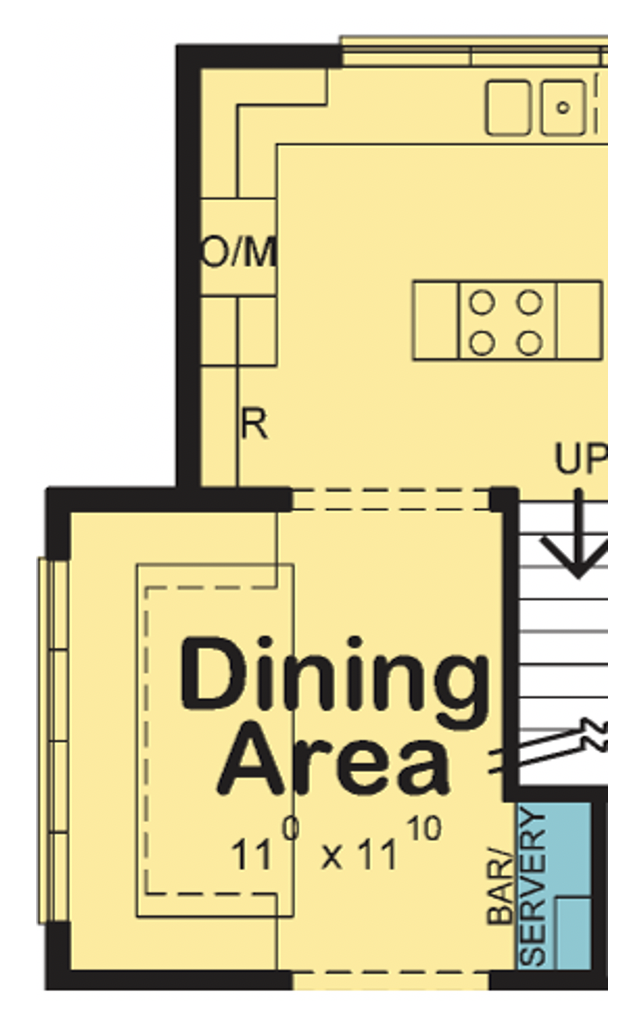Maximizing space in your home. Though sometimes unspoken, it’s a goal most of us share and pursue. How can thoughtful design provide more space? Last time we looked at private spaces – bedrooms, bathrooms and closets. Here we turn our attention to public areas.
Kitchens. Function and form – kitchens are asked to maximize space beautifully. Serious cooks look for abundant countertop prep space, and specifically, space on both sides of the cooktop and sink. Yet with the Sunflower Creek’s kitchen shown, it’s likely that the 12-foot deep by 6-foot wide pantry impresses the most. It would require 21 lineal feet of expensive cabinetry to match the storage efficiency of this pantry. And within the pantry, an Appliance Center conveniently keeps your most frequently used small appliances ready to use without cluttering your kitchen counters.
Kitchen island eating bars at the same height as the countertops maximize space for food preparation, buffet-style serving, or even finishing schoolwork. When space allows, extending the eating area to wrap around two sides of the island, as seen in the Olsen Place plan, provides more room for quick meals. And these 5-foot deep islands, which utilize back-to-back 24-inch deep base cabinets, provide lots of additional prep space AND storage.
Dining. Formal dining rooms plus casual breakfast areas aren’t often desired among today’s home buyers, who instead show preference for single eating areas that will be used regularly, plus island snack bars. However, many families still enjoy the practical storage and beauty of dining room hutches. Hutch spaces/recesses, like the Welker’s, offer the perfect location for your hutch so that it doesn’t protrude into the eating area, nor will your hutch dictate furniture placement and traffic patterns around it.
Depending on the size of home and other layout considerations, built-in banquette seating such as the Hutton’s layout, may maximize this space, as no room need be provided for sliding chairs back where the bench seating is provided.
Increasingly popular are dining areas that flow uninterrupted into an adjoining entertaining space. Having 10 people for Thanksgiving dinner? As illustrated here with the Shelton plan, simply add the leaves to your dining table. So what if it extends into the Family Room for a couple hours? You’re maximizing the eating space and bringing everyone together.
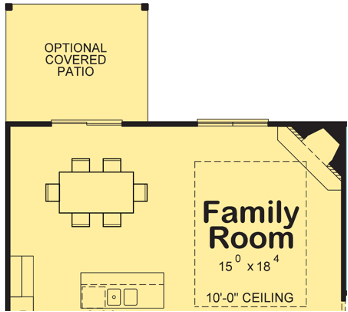
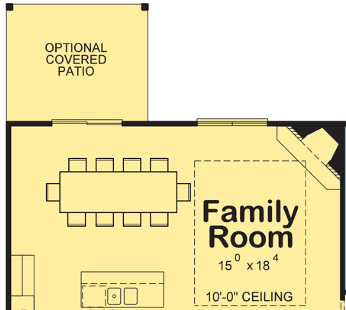
Also, sliding patio doors onto the rear deck/patio in this design maximizes space. A hinged door would typically swing into that area (locks and hinges on the inside provides enhanced security), potentially conflicting with your table and chairs.
Fireplaces are still a popular amenity but can crimp your entertaining area. While saving money on exterior trim, locating the fireplace on the inside of the family room takes up more space than having a fireplace on the outside. Choosing a traditional raised hearth in front of the fireplace also takes up space in that room. Many of today’s contemporary linear fireplaces are considerably thinner, taking up less space.
Where the big screen TV and associated electronics go is another issue. Wall mounting the TV eliminates the need for a stand or entertainment center, freeing up space, but may still pose the question of where the DVD player, game system(s) and accompanying electronics go. At least many of today’s electronics use RF remote controls meaning you no longer need a “line of sight” between the remote and what it is controlling, making audio-visual/tech closets a space-efficient solution.
So far we’ve covered private spaces such as bedrooms and baths, and entertaining-oriented public spaces. Next we turn our attention to flex areas, garages, basements and attics.
For more resources on thoughtful design and products:
- View other articles on our blog
- Browse our Her Home™ Magazine
- Thoughtful Design Concepts

